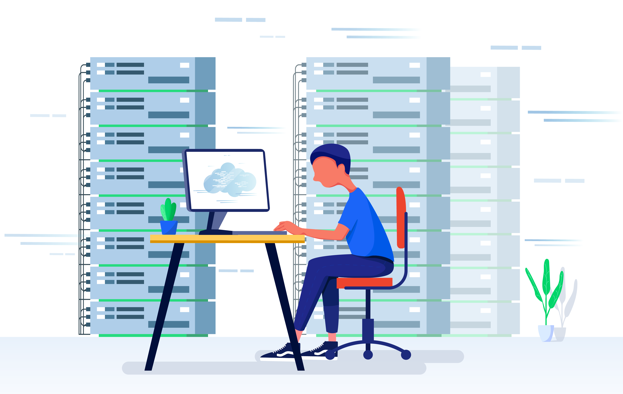Web Hosting Security -
Protecting Your Online Presence

Whether it’s logging into a website, emailing a colleague, or posting a photo to a social media page, the things we do online can have massive consequences offline. That’s why web hosting security is so important. Web servers are constantly at risk of cyber attacks, and they need to be equipped with the proper tools to mitigate these risks.
While no single feature makes one web host more secure than another, a constellation of features contributes to overall web hosting security.
The responsibilities of a web host vary from business to business, but most providers include some essential security features in their plans. These include regular data backups, protection against DDoS attacks, and network monitoring. It’s also important that a web hosting provider encrypts data transmitted between server and client by installing SSL/TLS certificates. These certificates ensure that the information in transit is unreadable to unauthorized parties and prevent data theft.
Distributed denial-of-service (DDoS) attacks are a serious threat to web hosting security, and they can take websites offline in seconds. To protect against DDoS attacks, most hosting companies use a content delivery network that rejects malicious traffic and helps keep the server up and running.
Even if the hardware in a data center is physically secured, the information stored in the database can still be vulnerable to hackers. To help safeguard this information, many hosting companies employ RAID storage, which keeps two or more copies of data and files on separate devices to prevent a single-unit hardware failure from wiping out the entire system.
As a result, if a web host loses the data in their databases, they can restore the information from a previous backup. This is a critical aspect of hosting security, and it’s important to ask potential web hosts how often they perform backups and how long they store them for.
In addition to backing up data, web hosting security should include tools and services for scanning for and removing malware from the server. This includes using a firewall, encrypting data transmission with SSL/TLS certificates, and limiting access to the server through SSH (Secure Socket Shell) or its equivalent.
Lastly, a web host should limit user access to their infrastructure to a small number of authorized technicians. This means requiring password-protected RSA keys to login to the server, disabling anonymous FTP logins, and restricting root logins to the admin account to only a few users with the password.

My Recent Posts

Freelancing
Take a look at our post about employing top freelancers from across the world.

All-in-One Sales Automation Platform
Dive into our latest article on all-in-one sales and marketing tools.

Sales Funnels
Take a look at our latest thoughts on sales funnels in this new article. Are they still worth it?

Welcome to Check Site Hosting, where our group of six passionate visionaries are redefining web hosting. Our journey is fueled by a blend of coffee-fueled brainstorming and a collective zeal for technology. We're a unique group of software engineers and digital marketers, each contributing diverse expertise to our mission. Together we are united in our quest for excellence and innovation. At the heart of Check Site Hosting is a community-driven environment, where creativity, diversity, and a commitment to exceptional service are the cornerstones of our progress.
Mike
©Copyright 2024 Check Site Hosting
11166 Fairfax Blvd Ste 500 #1179
Fairfax, VA 22030



